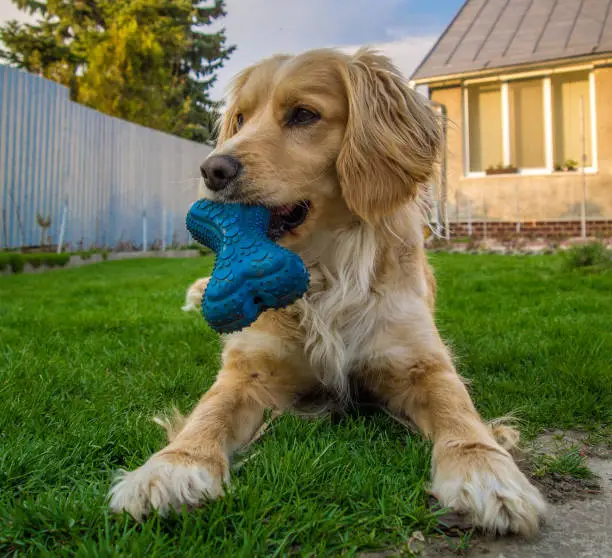How to Introduce New Dog Toys Without Overwhelming Your Dog
Introducing new dog toys to your furry friend is a fun and exciting experience, but it’s essential to do so in a way that doesn’t overwhelm or confuse them. Just like with humans, dogs can experience excitement, anxiety, or even stress when presented with new items in their environment. The process should be gradual, considering their personality, preferences, and comfort levels.
In this blog post, we will explore how to introduce dog toys in a manner that keeps your pet comfortable and excited, without causing any overwhelm. We will also touch on the role that dog food plays in enhancing your dog’s overall well-being and making their playtime more enjoyable.
Why Introducing New Dog Toys Carefully Is Important
Dogs thrive on routine and familiarity, so introducing any new item—whether it’s a new bed, bowl, or dog toy—can disrupt their sense of security if not done properly. While some dogs are naturally curious and eager to explore, others may become anxious or cautious about unfamiliar objects. Sudden or overwhelming changes in their environment can lead to unwanted behavior like hiding, excessive barking, or even refusal to engage with the new toy.
Introducing a new dog toy carefully will help ensure that the experience is positive and enjoyable. It will also allow you to gauge your dog’s interest in various toys, and determine which types of toys they prefer.
How to Introduce New Dog Toys Without Overwhelming Your Dog
1. Start Slow and Gradual
The key to a successful introduction is to start slow. Don’t throw a pile of new toys at your dog all at once. Instead, introduce them to one toy at a time, allowing them time to become familiar with it. This gradual approach will help your dog adjust to each new item without feeling overwhelmed.
If your dog seems unsure or apprehensive, it may be helpful to put the new dog toy near their favorite resting area or bed so that they can explore it on their own terms. Allowing your dog to sniff and investigate the toy at their own pace will help them become comfortable with it.
2. Use Positive Reinforcement
Positive reinforcement is one of the most effective ways to encourage your dog to engage with new toys. Each time your dog interacts with the new dog toy, reward them with praise, affection, or even a small treat. This will help them associate the new toy with positive experiences, making it more likely that they will continue to play with it.
For example, if your dog starts to sniff or paw at the toy, praise them immediately. If they pick it up or start playing, offer even more encouragement. Positive reinforcement will also help reduce any anxiety or reluctance they may have toward the new toy.
3. Make Playtime Fun and Engaging
If your dog is hesitant about the new dog toy, you can help spark their interest by making playtime fun and engaging. Try incorporating games or interactive activities to get your dog excited. You can engage in a game of fetch, tug-of-war, or hide-and-seek using the new toy. Playtime should be an enjoyable and interactive experience that encourages your dog to connect with the toy.
For dogs that love treats, consider using a treat-dispensing dog toy. This type of toy offers an additional incentive by rewarding your dog with a tasty snack when they play with it. Treat-dispensing toys are especially useful for dogs who are food-motivated, as they combine play and dog food in a fun way.
4. Observe Your Dog’s Behavior
As you introduce the new toy, keep an eye on your dog’s behavior. Every dog is different, so it’s important to pay attention to how your dog reacts to the new toy. If your dog seems scared or overwhelmed, it may be best to give them a break and try again later. For dogs that are more sensitive to new items, introducing the toy in a calm, quiet environment can also make a difference.
If your dog shows signs of anxiety, such as hiding, cowering, or refusing to engage with the toy, try to reduce the intensity of the introduction. Take it one step at a time, and don’t force them to interact with the toy. Instead, try offering it in a more relaxed setting when your dog feels more comfortable.
5. Rotate Toys to Keep Things Interesting
Dogs can quickly lose interest in toys if they are exposed to the same ones day in and day out. To keep things fresh and exciting, consider rotating the new dog toys every few days. This approach helps maintain their interest by introducing variety while still giving them the opportunity to enjoy their toys.
When you rotate toys, be sure to reintroduce them in a way that keeps your dog’s curiosity piqued. For example, if you introduce a new toy and your dog plays with it for a few days, take it away for a while before bringing it back out. By doing this, your dog will rediscover the toy and likely become more enthusiastic about it.
6. Create a Calm and Comfortable Environment
The environment plays a significant role in your dog’s ability to adjust to new dog toys. When introducing a new toy, ensure that your dog is in a calm and comfortable setting. Avoid overwhelming them with distractions, such as loud noises or other pets, that could make them feel stressed or anxious.
You can set up a quiet area with soft bedding or a favorite blanket, where your dog can focus on the toy without feeling distracted. A calm environment allows your dog to engage with the toy without feeling like they’re being forced into something new and unfamiliar.
7. Choose the Right Toy for Your Dog’s Personality
Not all toys are created equal, and choosing the right toy for your dog’s personality and preferences is essential. Some dogs prefer squeaky toys, while others enjoy interactive toys that involve treats or puzzles. If your dog has a strong prey drive, they may enjoy chasing balls or engaging in tug-of-war games.
When choosing a dog toy, consider your dog’s age, size, and activity level. Puppies may prefer soft, chewable toys, while older dogs may prefer toys that provide mental stimulation. For dogs that are food-motivated, treat-dispensing toys can be a great way to keep them engaged.
8. Don’t Overload Your Dog with Too Many Toys
While it’s tempting to buy a wide variety of dog toys for your furry friend, it’s important not to overwhelm them with too many options at once. Introducing too many toys at the same time can make it difficult for your dog to focus on any one toy, which could lead to frustration or confusion.
Instead of offering an entire collection of new toys all at once, give your dog the chance to adjust to one new toy before adding more. A manageable number of toys will help your dog focus on playtime and enjoy the toys you’ve introduced.
The Role of Dog Food in Enhancing Playtime
In addition to introducing dog toys, your dog’s overall well-being, including their diet, plays a vital role in ensuring they have the energy and motivation for play. Proper dog food helps keep your pet healthy, active, and ready for fun.
Feeding your dog a balanced diet that meets their nutritional needs will help support their energy levels, muscle strength, and overall health. The right dog food can make a significant difference in your dog’s ability to engage with new toys and maintain an active lifestyle. Be sure to choose food that is appropriate for your dog’s breed, size, and age to ensure they’re getting the nutrients they need to enjoy playtime.
Additionally, some dog food brands offer products with added benefits for your dog’s coat, teeth, and joints, making them even more suited for active play. A well-fed dog is more likely to be enthusiastic and eager to play with new toys, so feeding them the right food is just as important as introducing the toys themselves.
Conclusion
Introducing new dog toys to your pet should be an exciting and enjoyable experience, not something that overwhelms or stresses them out. By following these tips—starting slow, using positive reinforcement, and observing your dog’s behavior—you can ensure that the process is smooth and enjoyable for both you and your dog. With patience and care, your dog will learn to love their new toys and look forward to playtime each day.
Remember, choosing the right dog food and maintaining a healthy diet is equally important in supporting your dog’s energy levels and overall well-being. By balancing their diet with enjoyable playtime, you can provide your dog with a happy and fulfilling life.














Post Comment